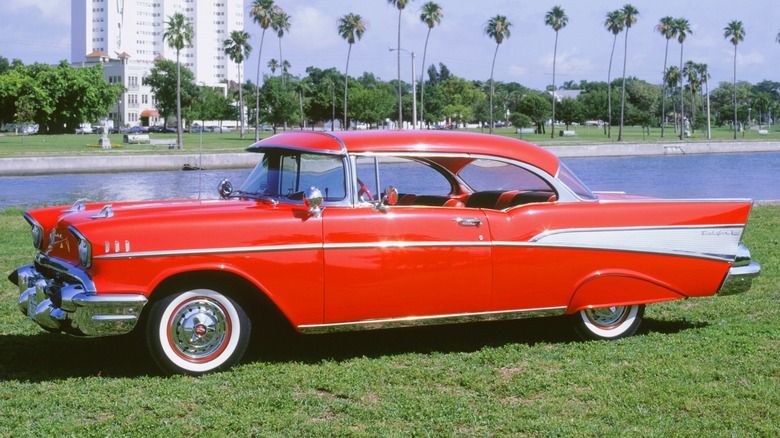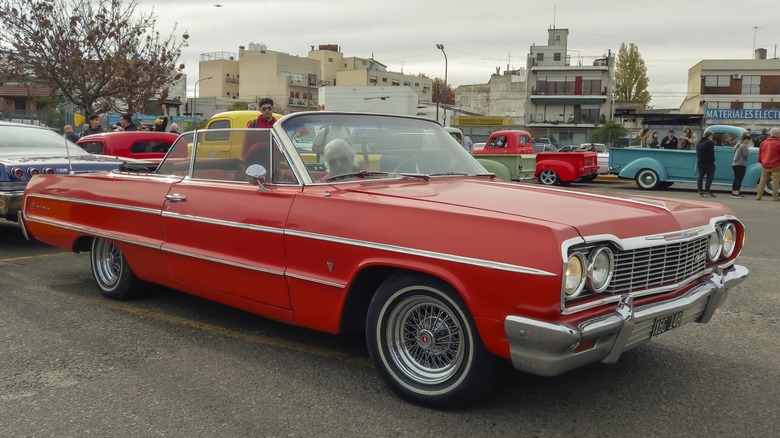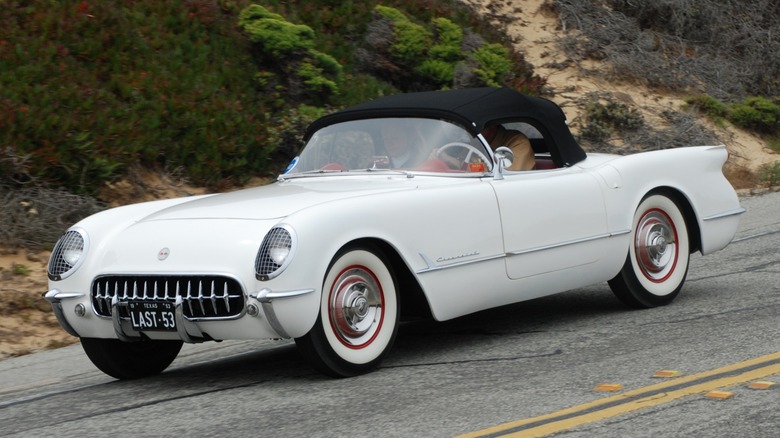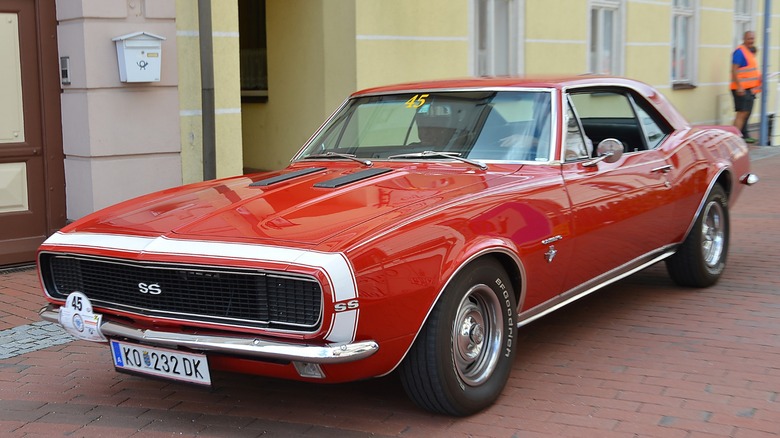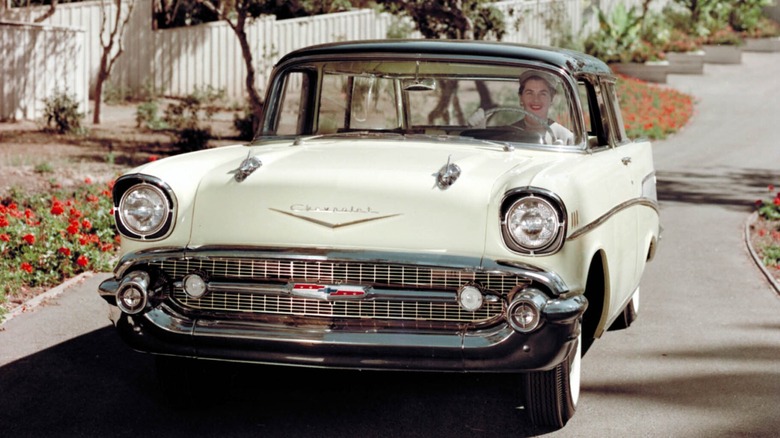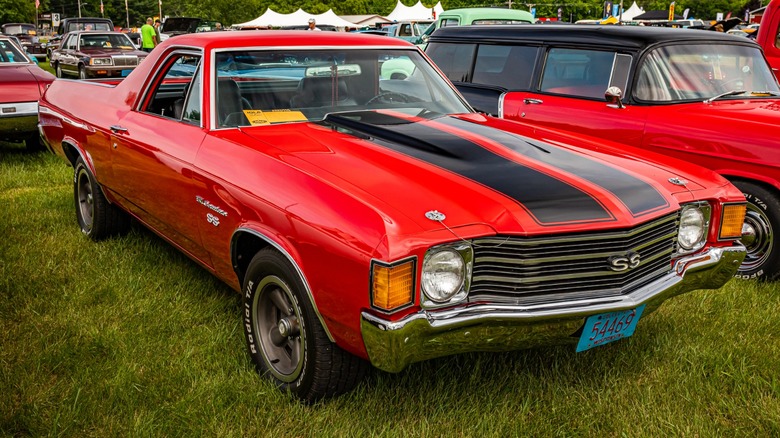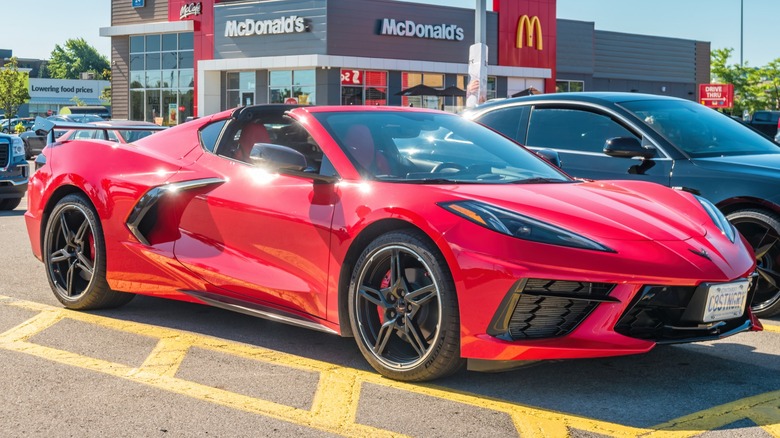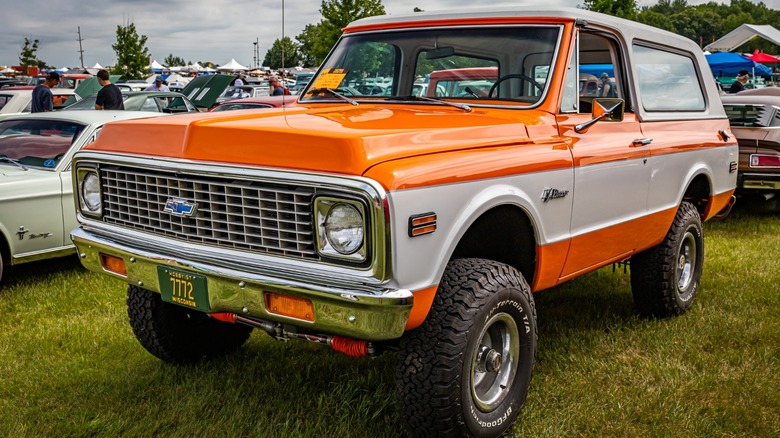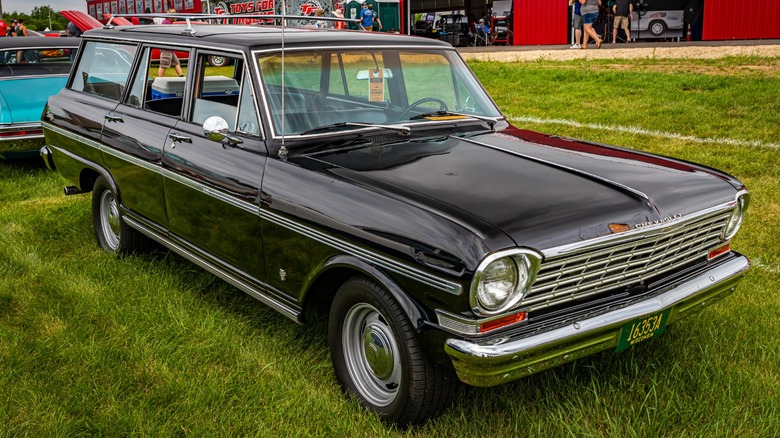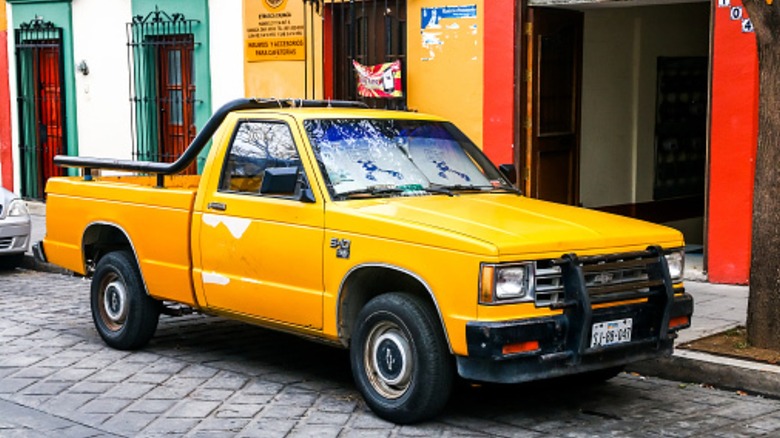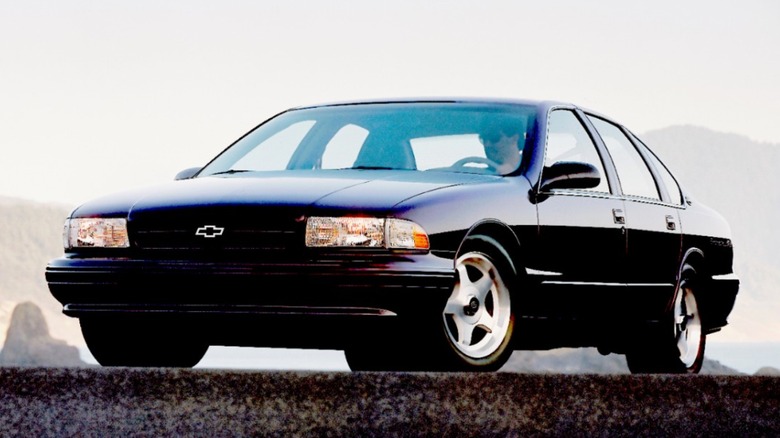The 10 Most Iconic Chevrolet Models Ever Built (Did Your Car Make The List?)
Chevrolet Motor Division has been building cars for well over a century as a division of the General Motors Corporation. As the affordably priced division of the company, Chevrolet, also commonly called Chevy, has also been a leading manufacturer in terms of total units sold. Furthermore, that has also put it in a position to be a leader in innovation and design, with many Chevrolet models being extremely popular and becoming beloved classics as they age.
In addition to being a leading manufacturer of affordable automobiles, Chevrolet has also been at the forefront of performance, especially in the post-war period. Throughout this time, most Americans have had a Chevrolet in their family and almost certainly have been transported in one of its many offerings. Also, Chevrolet's business has long been bolstered by its light truck business, providing rugged trucks to people from all walks of life from farmers and ranchers to plumbers and carpenters.
With such a long and storied history, it should come as no surprise that many of its beloved vehicles have become iconic. While there are many to choose from, here is a look at 10 of the most iconic examples. Do you have one of these yourself tucked away in a garage or shed?
1964 Chevrolet Impala
Impalas are medium-sized antelopes indigenous to eastern and southern Africa. They are beautiful and graceful animals known for their speed and ability to leap great distances. These qualities make the Impala name well-suited to use for an automobile, and Chevrolet started using this moniker in 1958 as a premium trim level of the popular Bel Air. The name caught on so well that the company spun it off into its own model line. The new car was a sporty large coupe that, in 1961, began offering the SS high-performance package. Sales throughout the '60s remained high, leading to millions of Impalas on American roads.
The sheer number of Impalas led to them being revered as classics. While you would find plentiful examples of well-preserved or restored copies at classic car shows, something else bumped them up into the status of an icon – hip-hop. While many Impalas from this era have found fame in pop culture, it was specifically a 1964 Impala enshrined in early breakout hip-hop hits such as "Boyz n tha Hood" by N.W.A. in 1987 and the iconic line in Dr. Dre's 1991 hit "Let Me Ride" in which he proclaims that he is, "Rollin' in my six-four." For many, nothing screams hip-hop quite like a 1964 Impala customized with exotic paint rolling on 13' wire wheels and juiced up with hydraulics.
1953 Chevrolet Corvette
After WWII, scores of Americans returning fresh from the fight who were also flush with cash sought to buy things not because they needed them but because they wanted them. For many young GIs, the most popular purchase was a sports car, particularly after experiencing them while overseas, and came home to buy British roadsters from the likes of MG, Jaguar, and Triumph. Seeing a deficit in their offerings and an opportunity to exploit demand, Chevrolet planners began developing an American car to fill the void. This is how they birthed the Chevrolet Corvette.
The first Corvette arrived to a warm reception at the auto shows and went on sale sporting the Chevrolet Blue Flame inline-6 engine with only a 2-speed automatic transmission offered. It also differed from other cars of the day by having a body made completely out of fiberglass, helping to make it incredibly light and nimble. The car that entered production ended up being a handsome machine with two seats and no roof, a true roadster. Frustratingly for management at Chevrolet, sales did not match the enthusiasm of the press, and only 183 of 300 units built in its first year were sold.
Regardless, Chevrolet kept it in production, with it finally hitting its stride when a 265 cu. In. V8 was offered in 1955. The Corvette would eventually become a true icon of the American auto industry, with a long and illustrious history of being the premier performance-oriented sports car — all of which is even more impressive considering it comes from GM's low-price leader.
1967 Chevrolet Camaro
As automakers sought to introduce smaller cars in the early '60s, Ford's Lee Iacocca sought to create something different and came up with a smash hit, the Ford Mustang. Seeing Ford snatch up so many potential sales from their dealers, Chevrolet went into action on a competitor. Even though Chevy had its Corvair, Chevy II, and Corvette covering both small and high-performance categories, it still had to respond.
Some of Chevrolet's management initially felt the Mustang would not be highly successful but changed their tune once sales figures rolled in. Therefore, they gave the designers a commission to develop a new car that would be better than the Mustang in all respects. With this mandate, the Camaro is what came from the design studio and proved to be an excellent alternative to the Mustang.
The Camaro debuted in 1967 to a public eager to snatch up the sporty and fast cars. Original 1967 Camaros came with a choice of two 6-cylinder engines or a potent 327 cu. In. V8 with 275 horsepower. Right out of the gate, the Camaro found great popularity and soon became a Chevy favorite. By 1969, engine offerings expanded, including the legendary Z/28 with the all-new small block 350 and SS 396 versions with up to 375 horsepower. Chevy proved itself with this first-generation Camaro, which has since become one of the most valuable classic Chevrolets on the market.
1957 Chevrolet Bel Air
Few American automobiles of the 1950s measure up to the Chevrolet Bel Air, and that's not because the Bel Air was necessarily a better car or more luxurious. It was neither faster nor more capable than some of its competition, but it still stands out as an icon of the era.
Chevrolet first used the Bel Air name for a top trim level in 1950 and again in 1953. However, in the 1955 model year Chevrolet introduced a new Bel Air with the now familiar body style that ran until 1957. These could be had in coupe, convertible, sedan, wagon, and shooting brake. In their day, these were robust and reliable cars that sold reasonably well. Coinciding with the Bel Air line was Chevy's new small block V8 engine, which went on to be possibly the most successful and longest-running engine production for an American V8.
The combination of good looks, a powerful engine, and simple reliability made these cars very attractive purchases back then. However, the build quality led them to outlast many competitors and avoid the crusher. 1958 brought many styling changes that were not so popular, leaving the 1957 models somehow more desirable, and it was through the aftermarket, hot rod, and custom car business that kept them alive until today. Further boosting the image of the Bel Air is its many film appearances, most notably the 1955 model seen in the classic George Lucas film "American Graffiti."
1969 Chevrolet El Camino SS 396
Starting in 1959, designers at Chevrolet thought the next big thing might be to take one of its popular passenger cars and transform it into a pickup truck. They called this creation the El Camino, and since it continued in production through the 1980s, those designers were onto something. The first one came as a modified Brookwood station wagon but changed base models from time to time. By the end of the '60s, it came as a truck version of the Chevelle, a highly popular car in its own right.
This third-generation El Camino production ran from 1968 to 1972, right in the middle of the horsepower wars of the muscle car heyday. While it was a truck, it had a muscle car in its bones. Just like the Chevelle, El Caminos could be ordered with a range of engines including a straight-6 or V8. At the low end was a 230-cubic inch straight-6 with just 140 horsepower, but for those power-hungry buyers, the range-topper was the SS 396 trim package with a 396 cubic inch V8 pushing out 375 horsepower.
The SS 396 was and still is the El Camino to have. It combines classic good looks with loads of big block horsepower in a package that can haul some light landscaping. It is the perfect vehicle to get some modest renovating done while retaining a comfortable ride to the office. However, the SS 396 has the added bonus of being able to tear up the drag strip –- you just might need to keep the landscaping material in the bed to get any traction.
2020 Chevrolet Corvette
The Corvette has been an American institution since its inception. Many of its models have been icons, including the first 1953 model, the 1963 split window Stingray, the ultra-high-performance ZR1, and finally, the 2020 model. What makes each of these iconic differs, but in 2020, the change from more than 60 years of being a traditional front-engined rear-wheel-drive sports car to a mid-engine car like Italian supercars was Earth-shattering.
Although the idea of a Corvette with an engine in the middle had been bandied about for decades and even teased in some pretty incredible concept cars, nobody thought it would ever amount to more than a dream of some of the more fanatical Corvette enthusiasts. However, the design team for Corvette had done so much to improve that car in the modern era that they found that the only way to continue pushing the envelope was to make the switch.
When it was finally unveiled and then actually put on sale to the public, it sent shockwaves through the motoring press and the section of car buyers that would buy one of these cars. It has since been a rousing success, garnering accolades from the press and owners alike. Ultimately, it's iconic because it finally gave American sports car buyers the chance to have a car with the handling and performance of an Italian beauty for a fraction of the price.
1969 Chevrolet K5 Blazer
In the post-war period, Chevrolet brought us many new cars that redefined entire segments of the industry. The Jeep used in the war became a favorite off-road machine while the International Harvester Scout took the same concept and added a few more creature comforts. Ford's Bronco blended the two ideas for another rugged toy for the trails, but Chevrolet went another direction. Using the existing chassis and design of its C/K pickup truck, shortened the wheelbase and added a full-length removable roof. The resulting vehicle was then called a Blazer and it took off immediately.
Unlike its competitors, the Blazer blended the off-road ruggedness with a more comfortable and usable platform. Having a wider track and longer wheelbase made it ride better on the road and its full-size truck chassis gave it plenty of capability for hauling or towing. Furthermore, it looked great and the removable top gave it a playful streak that could be at home on a mountain trail or the beach.
The Blazer was such a success that it remained in production well into the '90s, and it could be said it never really left as the Tahoe that replaced it was fundamentally the same vehicle. The aftermarket sales of Blazer accessories and modifications continue to thrive thanks to the enduring popularity of this vehicle. All-year models remain popular, but the early ones are thought to be some of the best in terms of styling. Regardless, any of them in pristine condition will not come cheap -– some go for more than $100,000 -– in today's market because there is nothing else quite like the iconic Chevy Blazer.
1962 Chevy II
The Chevrolet lineup throughout the 1950s consisted of large cars. However, as the '60s got rolling, there was a trend toward more compact offerings. With sales of cars like the VW Bug taking off, management back in Detroit wanted some of the action. Furthermore, Ford had released its compact Falcon, so Chevy had to counter that as well. The automaker ended up bringing a couple of smaller cars to the market including the Corvair and the Chevy II. It was the latter that would become a favorite of drivers of the time and hot rodders of all time.
The Chevy II was rushed to the market in an attempt to get a small and affordable car to dealers as quickly as possible. The base models were exceptionally basic, but they were affordable and came with the same expected reliability as other Chevys of the day. It was also very conventional using the most basic parts available -– its entire development time lasted only 18 months. Despite its thrifty nature, the original Chevy II was an attractive car and buyers liked it. They also got a choice of body styles including coupe, sedan, wagon, and convertible, and they could receive a higher spec trim called Nova 400.
The Nova name would eventually replace the Chevy II name and continue as a successful model for many years. However, what makes the car so iconic today is its prevalence on drag strips. With such a lightweight chassis and stunningly good looks, Novas are favorites among racers who keep them going today as icons of the early compact car legacy.
1983 Chevrolet S10
Throughout the '70s, the Big Three in Detroit imported small trucks from Japan and slapped American badges on them for sale at their dealers. They proved to be very popular and sold well enough to keep them around for more than a decade. Yet, as the years went on and production costs and tariffs rose, it became financially unsound to continue this practice. Therefore, Chevrolet chose to take the formula that had worked so well and bring everything in-house by developing and building the S10 pickup.
The first S10 went on sale in 1982, replacing the basic Isuzu-built LUV it had imported for many years. Chevrolet realized many benefits from domestic production of its original design, and consumers benefited from having a small truck choice with nicer interiors offering more options and a V6 engine for more power. Consumers flocked to the new little trucks and bought millions of them.
While the Japanese continued to export trucks with their own branding, the S10 took off and sold as well or even better than the imported trucks. While the little truck was always a more pedestrian type of vehicle with relatively low-performance figures, its utility, practicality, and usability made it an extremely popular choice for a broad swath of buyers. Furthermore, few of these trucks are now considered to be highly desirable for collectors but it doesn't matter as the S10 left an indelible mark on car and truck cultures, making it an icon of its own making.
1994 Chevrolet Impala SS
With the 1990s came leaps in engine technology that brought about the return of horsepower to cars that had been choked and restricted by emissions regulations for nearly two decades. This also led to some special editions bringing back the spirit of the muscle car era, such as the Corvette ZR1. However, not everyone could afford a fancy Corvette nor would a two-seater fulfill their needs. These buyers needed something with a bit more practicality for a lesser price. That ended up being the Impala SS, which ran from 1994 to 1996.
The formula with this car was simple and proven. Take a full-size car from the regular lineup –- the popular full-size Caprice -– add bold paint and a few appearance upgrades, then load it with power. It then received unique 17-inch wheels and a small deck lid spoiler, but not much else, keeping it more of a sleeper. Under the hood was an LT1 5.7-liter V8 tuned down a bit from the Corvette version to give it 260 horsepower, and the suspension and brakes came from police package Caprices. Rounding out the package were large bucket seats clad in leather and separated by a center console, something not found in other Caprice models.
The resulting car was something of a return of the muscle car. It was attractive, powerful, and comfortable. A total of 41,941 cars were produced, making them plentiful enough that they are still around but rare enough to make them exclusive. For a large '90s sedan, it doesn't get any cooler, making an icon for a generation of Gen X gearheads.
